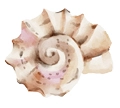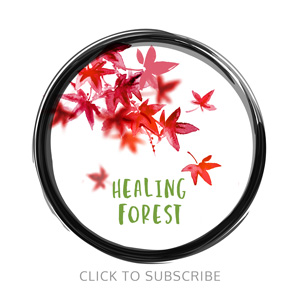From Chaos To Calm
As we sail the ocean of life, sometimes we can run into an island of trash. Chaos is an inevitable part of this journey – so how do you clear the mind in a natural, healthy way? In this post you’ll find a creative alternative for facing your confusions, and keeping your mind clear.
A Ploem walk is a unique way of clearing up inner as well as outer spaces. Just like plogging is a combination of picking up litter while jogging – a Ploem walk combines word games with picking up litter. The simple act of healing the outer can become the path for transforming the inner – one small act at a time. Adding stories and poems to the process taps into our deepest emotions, so that the chaos inside can turn into words which create a calm and clear mind.

Simplest Way To A Clear Mind?
Do you know what are the biggest reasons for not addressing chaotic situations in one’s own life? Most people are not aware of how to handle the challenge, but also fail to gauge the negative impact of ignoring their mental health. There are many other reasons, some of which are listed below. If you look closely, these are the same reasons for people not participating in clean-up drives or other community initiatives. Is it a co-incidence?

Just like adding music to a celebration brings it alive, mixing a creative angle to any difficult task makes it more engaging. The Ploem walks allow us to let go of negative thoughts and replace them with a clean and clear mind. These simple but fun activities will aid you in clearing the clutter inside your head, and creating a calm space for something useful to grow in it.

This article is part of our 12 magical walks that gift you highly useful skills for life’s adventures: Nature Play>>
Clear Mind & Ploem Walks
To start off, determine the area that needs to be cleaned and get the necessary approvals if required. Fix a date and time for the cleanup. Weekends and 2 hour slots work best. Recruit volunteers through various means, and ask them to bring a trash bag, gloves, drinking water. Keep some first aid handy. (You can even try it in your own garden to start off.)
Before the actual cleanup, the group assembles in a circle and creates the repair story.
Repair Game: In a repair story alternate members add positive and negative twists to a story. The group leader starts the story with a sentence. Moving clockwise, the next person in the circle gives the story a negative turn. However, their neighbour has to lift the story up again by making something positive happen. So the story moves in twists and turns – between good and bad, until the circle is completed.
Example: Jim got lost in the forest. > But he stumbled upon a magical waterfall. > Unfortunately, he had never learned to swim. > So he sat down and composed a beautiful song instead. > A gang of ruffians heard him singing and came to rob him. > One of the gang members turned out to be his long lost love from high school…. and so on.
This ‘Repair’ game is a metaphor for the clean-up drive. Things may appear challenging when we start, but a few well intentioned people can turn things around and start the process of healing, no matter how daunting the task.

Divide the group into pairs and start the cleaning activity for 30 – 45 minutes. Also assign roles such as team leaders responsible for smaller groups and safety officers. At a pre-determined time and place the group assembles again to take a break and play the following games.
Reduce Game: Ask participants to imagine they are going on a camping trip and can only bring 5 items with them. They must choose wisely and think about how to reduce their waste and environmental impact. In the next round, they have to go hiking and can carry only 2 out of the 5 things. Then on the hike they get separated from the group and are left with only one thing. What is that one thing they will hold on to?
Recycle Game: Ask people to use the alphabets in their own name to create other words. This activity can also be done in pairs where each pair is asked to use some letters from their first names to come up with new words.
The first step in clearing our mind is to reduce the clutter inside. Setting priorities provides a sense of direction and focus. When we identify what’s most important, we can let go of non-essential things. Also learning to sort our thoughts and rearrange them teaches us to look at our problems in creative ways. These two simple games can be useful training to keep our mind clear. Prioritising and rearranging leads to reduced stress and anxiety, and increases our productivity and overall sense of accomplishment.

Before you restart the cleanup drive again do a short nature walk to appreciate the beauty around you and recharge your inner spirit. Go slow and move in silence. Open your senses to find things that bring you peace and clear your mind. On the short walk you can try out 2 more activities.
Refuse Game: Play a game of “I Spy” where players take turns spotting something beautiful and refusing to let it get spoilt. For example, “I spy a peaceful pond, and I refuse to let it get trashed.” Each participant find something new and unique to appreciate and protect. This activity also helps us observe nature through other people’s perspective.
Reuse Game: Have participants bring in any interesting item that has been thrown away. As a group brainstorm creative ways the item can be used to give it new life. For example, an old t-shirt could be turned into a reusable shopping bag, or an old book could be transformed into a lampshade.
Clearing the mind can be a very daunting task just like cleaning our surroundings. During the process the mind can be filled with negative emotions such as sadness, anger, despair. By focusing our attention on the positive things around us we are able to channelise our energies in the right direction. Adding creativity to the task helps us look at the problem with new eyes.

Resume the clean up drive in small groups or pairs. At a predetermined time and venue get everyone together for the closing activities and sharing insights with each other.
Recover Game: Each participant finds a spot in nature that calls out to them. They sit in silence for 5 minutes to recenter themselves. Try to recover a memory of the space before your clean-up drive and compare it with the current state. Then reimagine the entire cycle repeating. The park gets dirty again, but a few people come and clean it up.
Regift Poem: Each person chooses a spontaneous word that comes to mind from their experience at the clean up activity. Use the word in a 2 line poem or a haiku, to gift it back to the friend who paired up with them during the clean up activity.
Cleaning up the nature outside can have a profound impact on growing a clear mind. When we engage in activities such as picking up litter, planting trees or flowers, or tending to a garden, we become more mindful and present in the moment. We connect the laws that govern nature outside with the nature that’s inside us. This can lead to a deeper understanding of our interconnectedness with all living beings. It will also fill you with a sense of gratitude and compassion.

Remember to follow safety guidelines and regulations throughout the cleanup drive. After the cleanup, dispose of the collected trash in an appropriate manner. Recycle as much as possible and dispose of the rest in a designated landfill or waste disposal site.
At the end don’t forget to celebrate the success of the cleanup drive with the volunteers. Thank everyone for their participation and encourage them to recreate this activity in their own circles. In case you do try this walk out, please post some pictures on our facebook group or leave a comment below.
In the next few weeks we’ll add photos and poems sent by our readers to this page.
Clear Mind and Health
There is a strong link between a clear mind and our health. When our mind is clear and focused, we are better able to manage stress and anxiety, which can have positive effects on our physical health. Stress is a major contributor to a variety of health problems, including heart disease, diabetes, and depression. By reducing stress through practices such as mindfulness and meditation or forest bathing, we can improve our overall health and well-being.
A clear mind also allows us to make better decisions and take more effective actions towards our goals, which can have positive impacts on our physical health. For example, when we have a clear mind, we are more likely to make healthier food choices, engage in regular exercise, and get enough sleep – all of which are crucial for maintaining good health.
Additionally, a clear mind can improve our mental health, reducing symptoms of anxiety and depression, and promoting feelings of happiness and contentment. This can have a positive ripple effect on our physical, mental, and emotional well-being.

There are several effective ways to achieve a clear mind. Regular exercise, such as yoga or jogging, can help reduce stress and improve focus. Meditation and mindfulness can also be helpful, as they can quiet the mind and bring a sense of calm and clarity. Getting enough sleep, eating a balanced diet, and limiting caffeine and alcohol consumption also promotes mental clarity. It is also helpful to take breaks from technology and engage in activities that promote relaxation and creativity, such as reading, listening to music, or spending time in nature. Overall, a combination of physical activity, mindfulness practices, healthy habits, and relaxation techniques will lead you to a clear and focused mind.

Clear Mind. Earth Mind.
A clear mind is a journey, not a destination. It is the same with cleaning our planet. The Ploem walks show you how to achieve balance and harmony through play. They combine benefits from many of the activities mentioned above in a way that is also beneficial for our Earth. We hope they offer you a joyful path to a clearer mind and a cleaner environment.

To get useful new ideas once a month, join our free newsletter.
For more activities from around the world, see: Nature Calm
Healing Forest is a volunteer run project. Our goal is to bring people and forests closer to each other through creativity and mindfulness. The aim is simple. Helping people heal. Helping forests heal.
Do share this post, so it reaches where it’s needed.



